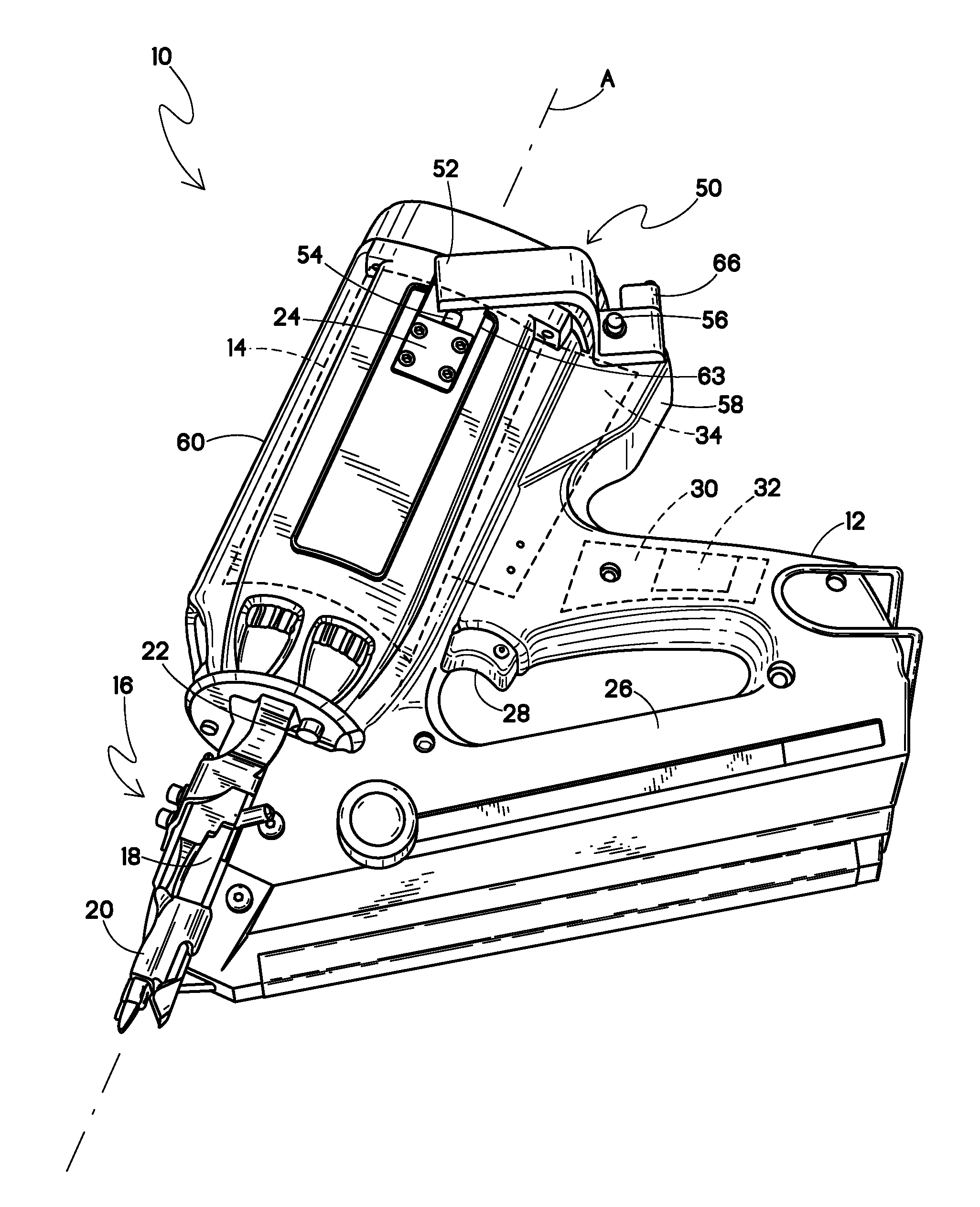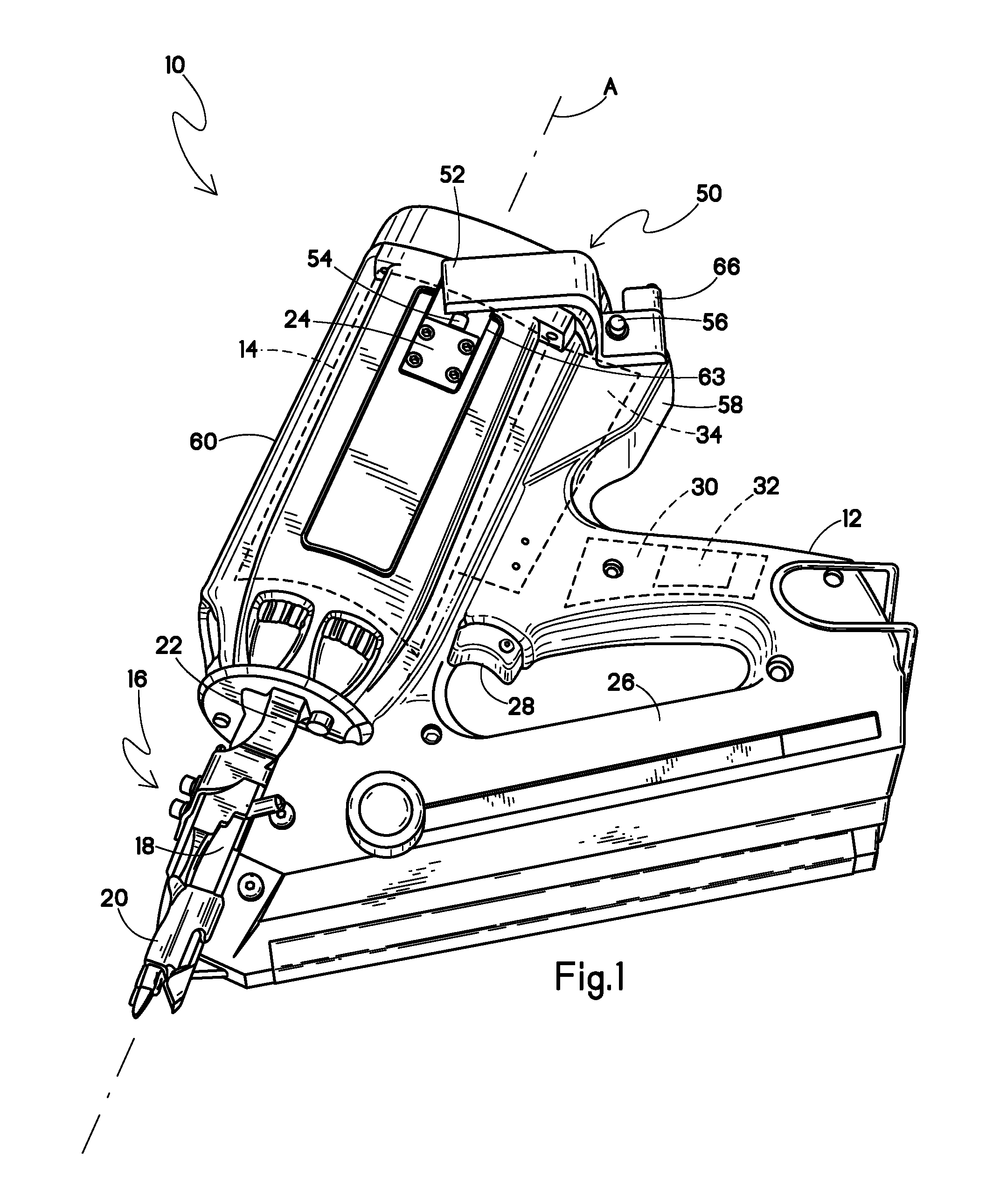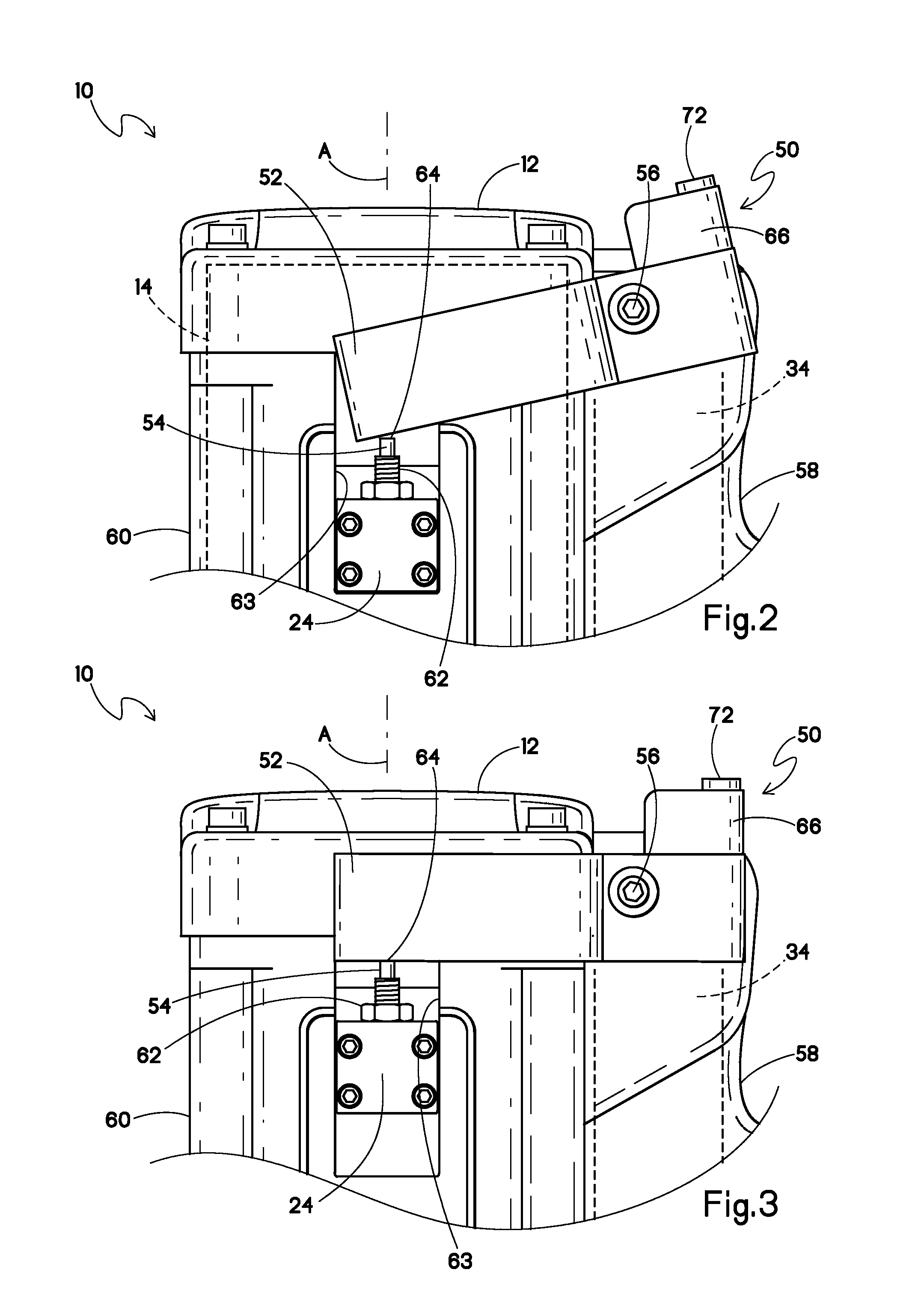Fuel cell actuation mechanism for combustion-powered tool
a fuel cell and actuation mechanism technology, applied in the direction of manufacturing tools, nailing tools, stapling tools, etc., can solve problems such as user fatigue, achieve the effects of reducing the tool actuation force, and facilitating fuel cell movemen
- Summary
- Abstract
- Description
- Claims
- Application Information
AI Technical Summary
Benefits of technology
Problems solved by technology
Method used
Image
Examples
Embodiment Construction
[0022]Referring now to FIG. 1, a combustion-powered, fastener-driving tool suitable for incorporating the present handle housing is generally designated 10. While the tool 10 is depicted as being of the type described in the patents listed above, other types of fastener-driving tools are contemplated as having the potential of incorporation of the present handle housing. Also, the tool 10 is depicted as a framing tool, however so-called trim tools are also considered suitable for use with the present actuation mechanism. The tool 10 includes a main housing 12, usually made of injection molded plastic. A power source 14 (preferably a combustion-powered power source as is known in the art and shown hidden) is at least partially enclosed within the housing 12, which may be provided in one or more components, as is known in the art.
[0023]Other major components of the tool are the nosepiece assembly 16, including a nosepiece 18 typically secured to the power source and configured for rec...
PUM
| Property | Measurement | Unit |
|---|---|---|
| movement | aaaaa | aaaaa |
| angle | aaaaa | aaaaa |
| mechanical advantage | aaaaa | aaaaa |
Abstract
Description
Claims
Application Information
 Login to View More
Login to View More - Generate Ideas
- Intellectual Property
- Life Sciences
- Materials
- Tech Scout
- Unparalleled Data Quality
- Higher Quality Content
- 60% Fewer Hallucinations
Browse by: Latest US Patents, China's latest patents, Technical Efficacy Thesaurus, Application Domain, Technology Topic, Popular Technical Reports.
© 2025 PatSnap. All rights reserved.Legal|Privacy policy|Modern Slavery Act Transparency Statement|Sitemap|About US| Contact US: help@patsnap.com



